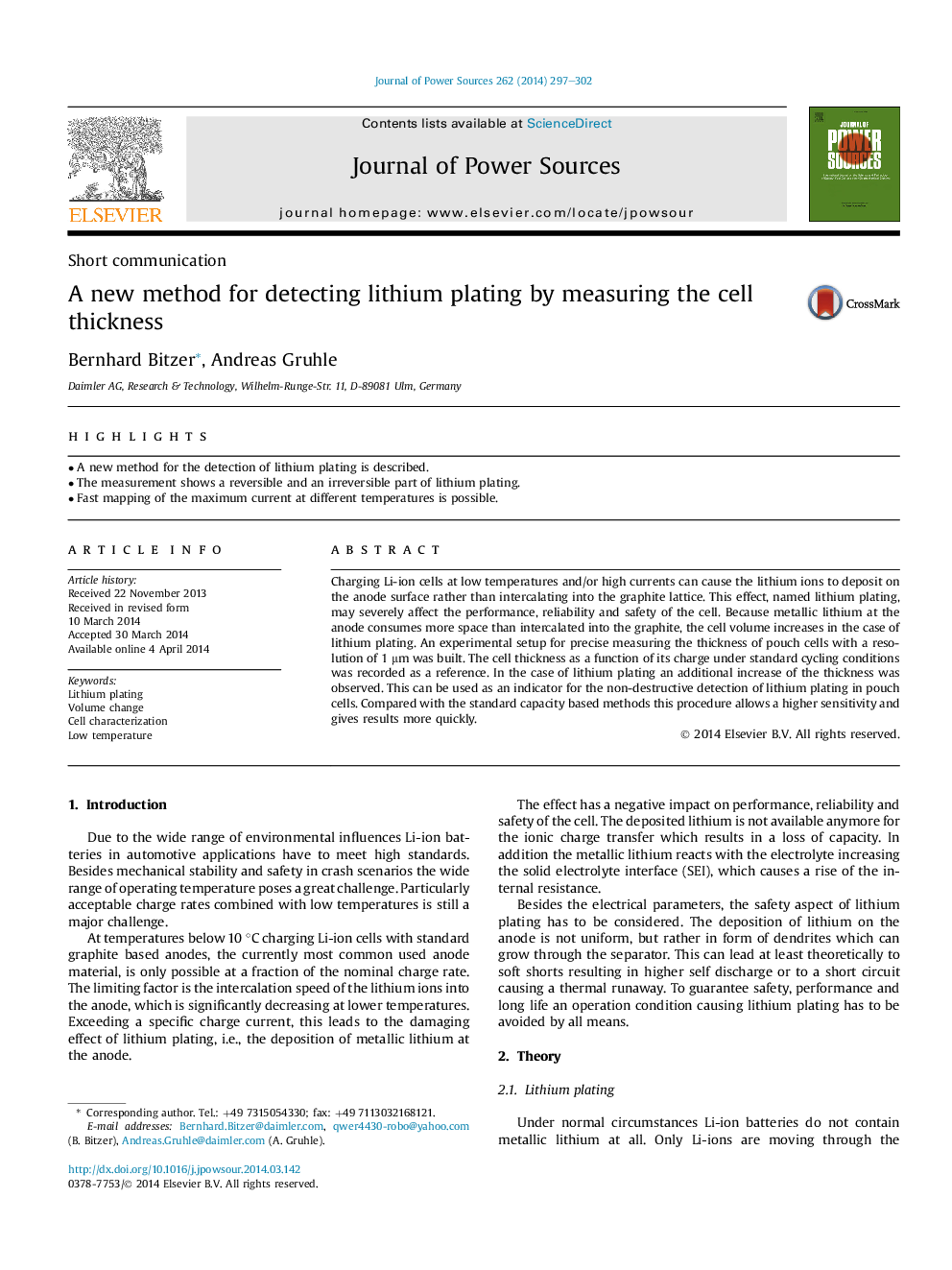| Article ID | Journal | Published Year | Pages | File Type |
|---|---|---|---|---|
| 7736675 | Journal of Power Sources | 2014 | 6 Pages |
Abstract
Charging Li-ion cells at low temperatures and/or high currents can cause the lithium ions to deposit on the anode surface rather than intercalating into the graphite lattice. This effect, named lithium plating, may severely affect the performance, reliability and safety of the cell. Because metallic lithium at the anode consumes more space than intercalated into the graphite, the cell volume increases in the case of lithium plating. An experimental setup for precise measuring the thickness of pouch cells with a resolution of 1 μm was built. The cell thickness as a function of its charge under standard cycling conditions was recorded as a reference. In the case of lithium plating an additional increase of the thickness was observed. This can be used as an indicator for the non-destructive detection of lithium plating in pouch cells. Compared with the standard capacity based methods this procedure allows a higher sensitivity and gives results more quickly.
Related Topics
Physical Sciences and Engineering
Chemistry
Electrochemistry
Authors
Bernhard Bitzer, Andreas Gruhle,
